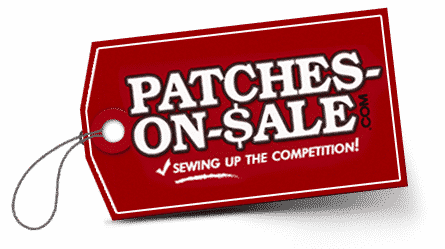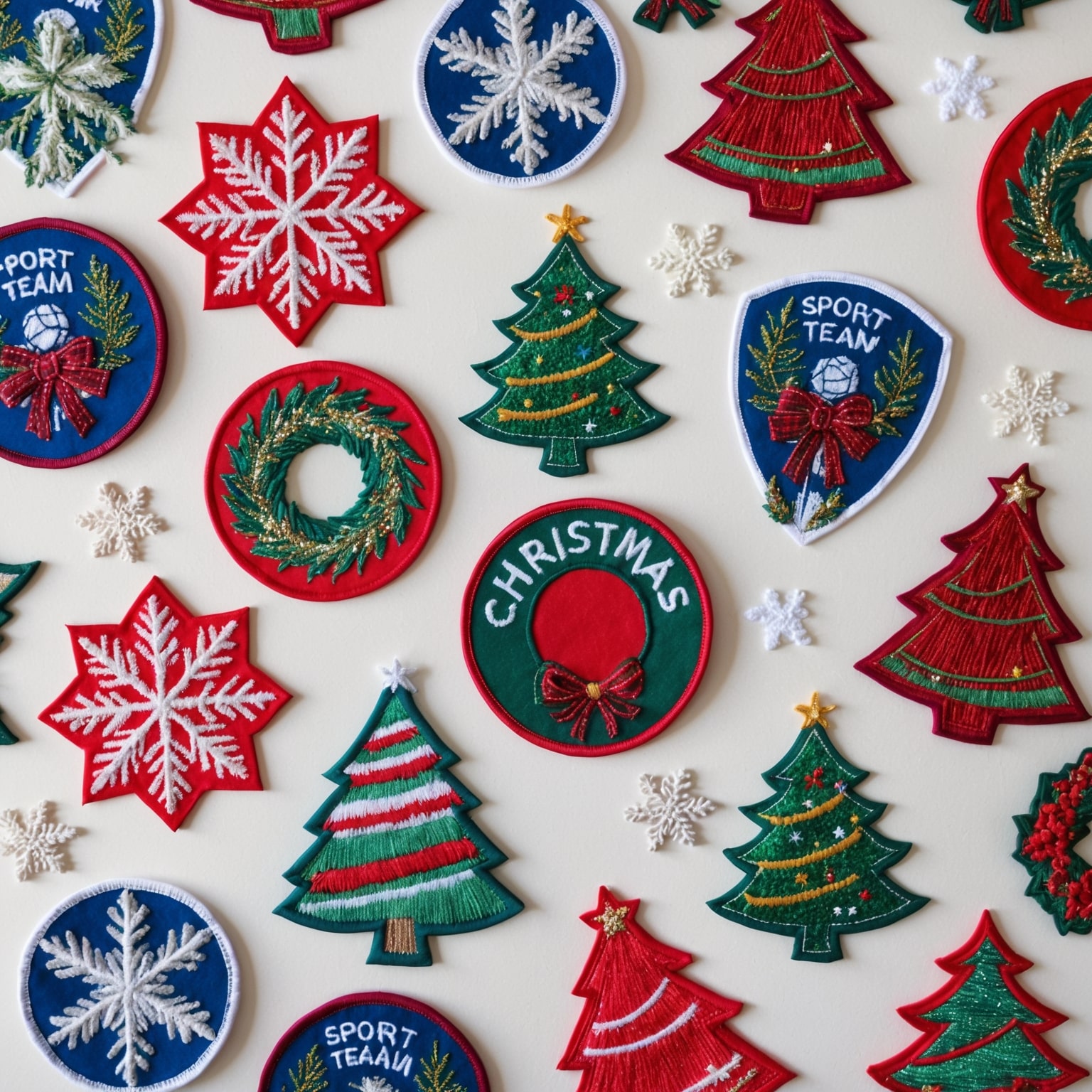In the world of branding, first impressions matter. One of the most effective ways for companies to make a lasting impression on clients, employees, and the public is through corporate patches. These small, intricately designed pieces of branding are more than just fabric sewn onto uniforms or apparel—they symbolize professionalism, identity, and the values a company stands for. A well-designed corporate patch can elevate the appearance of employees, reinforce brand recognition, and foster a sense of unity within an organization.
Creating an elegant and sophisticated custom corporate patch involves much more than simply placing a logo on a piece of fabric. The design process must consider the brand’s image, the patch’s functionality, and the aesthetic quality that will make it stand out. In this article, we’ll explore seven best practices for designing sophisticated corporate patches that leave a lasting impression. Whether you’re revamping an existing patch or creating one from scratch, these practices will ensure your corporate patch reflects the highest level of craftsmanship and brand integrity.
1. Align the Design with Your Brand Identity
The Importance of Brand Consistency
A corporate patch is an extension of your company’s brand identity. Therefore, the first and most critical step in designing a sophisticated corporate patch is ensuring that the design aligns with your brand’s values, mission, and visual identity. Every element of the patch, from the logo and color scheme to the fonts and symbols used, should reflect the core characteristics of your brand.
For example, a law firm looking to convey professionalism and trust may opt for a classic, minimalist design with deep colors such as navy blue or black, combined with clean lines and a formal typeface. On the other hand, a tech startup might use a more modern and bold design, featuring bright colors and geometric patterns that communicate innovation and creativity.
Colors and Typography
Color plays a crucial role in corporate patch design because it helps communicate the brand’s personality and tone. Using your company’s official brand colors will ensure consistency across all marketing materials, including apparel and promotional items. Additionally, it is important to choose a color palette that will look cohesive when embroidered or printed on fabric, considering that certain hues may appear differently on various materials.
Typography is another important factor. For corporate patches, simple, clean fonts tend to be the most effective. Avoid overly ornate or complex typefaces that can become difficult to read when scaled down. The font should reflect your company’s style—whether it’s a bold, sans-serif font for a tech company or a traditional serif font for a more formal industry like finance.
Best Practice: Use the company’s official colors, fonts, and logos in the design, ensuring that the patch remains a cohesive part of the brand’s visual identity. Choose a font that is easy to read, even when embroidered at a smaller size.
2. Simplify the Design for Clarity and Impact
Avoid Overly Complex Designs
One of the most common mistakes in corporate patch design is trying to fit too many elements into a small space. Overly complex designs can look cluttered and lose their visual impact. Since corporate patches are often embroidered, it’s important to keep the design simple enough to translate well into fabric without losing details. Intricate patterns or tiny text can become hard to distinguish once they are stitched onto the patch.
Simplicity in design ensures that the patch is easy to recognize from a distance and leaves a strong impression. Focus on the key elements—such as the logo, company name, and perhaps a simple graphic or slogan—rather than overcrowding the patch with too much information.
Balance Between Design Elements
A good corporate patch design strikes a balance between its various components. Whether you’re incorporating a logo, a tagline, or a graphic, each element should have enough space to breathe. Proper spacing helps the design remain clean, polished, and easy to read, which is essential for maintaining an elegant appearance.
Best Practice: Keep the design simple and avoid adding too many elements. Ensure that all design components are easy to read and recognize, even when the patch is viewed from a distance.
3. Choose the Right Shape and Size
Custom Shapes for Added Sophistication
While the standard shapes for corporate patches are often rectangular, square, or circular, custom shapes can add a layer of sophistication and help your patch stand out. Custom shapes allow for a more creative representation of your brand, such as creating a patch in the shape of your logo, an emblem, or a unique graphic that represents your company’s industry.
For example, a company in the automotive industry might design a patch in the shape of a gear or wheel, while a coffee company could opt for a patch in the shape of a coffee bean or cup. Custom shapes also give your corporate patch a more distinctive appearance, making it instantly recognizable.
Consider the Patch Size
Choosing the right size for your corporate patch is just as important as the shape. The patch should be large enough to display the key elements clearly but not so large that it overwhelms the garment or item it’s attached to. Patches that are too small may result in unreadable text or indistinguishable details, while patches that are too large may appear bulky or awkward.
When determining the size, consider where the patch will be placed. For example, shoulder patches on uniforms are typically larger, while chest or sleeve patches might be smaller. It’s important to strike a balance between visibility and comfort.
Best Practice: Choose a shape that complements your brand and makes the patch visually distinct. Ensure the size of the patch is appropriate for its placement and maintains readability and visual impact.
4. Prioritize High-Quality Materials and Stitching
Use High-Quality Fabric and Thread
The materials used in your corporate patch play a critical role in its overall appearance and durability. High-quality fabrics such as twill, felt, or woven polyester are commonly used for patches due to their durability and professional finish. Similarly, the type of thread used for embroidery can affect the final look of the patch. A patch made with high-quality, durable thread will not only look more polished but will also stand the test of time, even with regular wear and tear.
For embroidered patches, the stitching itself is an essential element of the design. Ensure that the stitching is tight and precise to capture the details of your design accurately. Loose or uneven stitches can detract from the overall elegance of the patch and make it look unfinished.
Explore Embroidery Techniques
Embroidery techniques can add texture, depth, and a sense of luxury to corporate patch designs. Raised embroidery, for example, can make certain elements of the patch—such as the logo or emblem—stand out, creating a 3D effect that adds a touch of sophistication. Metallic threads or glow-in-the-dark threads can also be used sparingly to add unique visual effects, though it’s important not to overdo these techniques, as they can detract from the overall elegance.
In addition to traditional embroidered patches, you might also explore woven patches, which offer finer detail and a smoother finish, making them ideal for intricate logos or text.
Best Practice: Invest in high-quality fabric and thread to ensure durability and a polished finish. Explore advanced embroidery techniques such as raised embroidery for added texture and sophistication.
5. Make the Patch Functional as Well as Aesthetic
Consider the Patch’s Purpose
While the visual appeal of a corporate patch is important, it’s equally important to consider its functionality. Think about how the patch will be used—will it be sewn onto uniforms, attached to hats or bags, or used as a detachable accessory? Understanding the patch’s purpose can help guide design decisions related to size, shape, and material.
For example, patches intended for uniforms should be made from durable, washable materials that can withstand regular wear and cleaning. If the patch will be used on outdoor gear, such as jackets or backpacks, consider using weather-resistant materials to ensure the patch remains in good condition, even in harsh environments.
Velcro, Iron-On, or Sew-On Options
Depending on the intended use, consider offering different attachment options for your corporate patch. While sew-on patches are the traditional choice, iron-on patches provide an easier and more convenient way for individuals to attach them to clothing or accessories. Velcro-backed patches offer the added advantage of being detachable, which is ideal for items like uniforms or bags where the patch may need to be removed and reapplied.
Best Practice: Design the patch with its intended use in mind, ensuring it is functional as well as aesthetically pleasing. Consider offering different attachment options based on the needs of your employees or customers.
6. Incorporate Texture and Depth for Visual Interest
Adding Texture with Raised Embroidery
Texture can elevate a corporate patch from a simple piece of fabric to a sophisticated and eye-catching accessory. Raised embroidery is one of the most effective ways to add texture to your patch design. By using a combination of flat and raised stitching, you can create a multi-dimensional effect that adds depth to the design. For example, a raised logo or emblem can stand out against a flat background, making the design more visually interesting and dynamic.
Play with Different Textures
In addition to raised embroidery, other techniques such as applique or layered fabrics can add texture and sophistication to your corporate patch. Applique involves attaching one piece of fabric onto another, creating a layered effect that can make the design more visually complex. Using materials like felt or leather for certain elements of the patch can also add a luxurious feel to the design.
Best Practice: Incorporate texture through raised embroidery or layered fabrics to add depth and sophistication to your corporate patch. Use these techniques strategically to highlight key elements of the design.
7. Pay Attention to Details and Finishing Touches
Border and Edge Finishes
The edge of the patch is often an overlooked aspect of design, but it plays an important role in the overall appearance and durability of the patch. A well-finished edge not only adds a polished look but also prevents fraying, ensuring that the patch remains intact even after extended use. There are several types of border finishes to consider:
- Merrowed Edge: A traditional, thick stitched border that wraps around the edge of the patch. This finish is ideal for circular, oval, or square-shaped patches and gives the patch a clean, finished look.
- Die-Cut Edge: For patches with custom or intricate shapes, a die-cut edge is used to follow the contours of the design. This edge can be either stitched or laser-cut, depending on the material used.
- Heat-Sealed Edge: A heat-sealed edge can be used for patches with intricate designs or lightweight materials. This edge is created by applying heat to seal the edges of the patch, preventing fraying and giving the patch a sleek, modern look.
Add a Custom Backing
The backing of your corporate patch is another area where you can add a finishing touch that enhances both functionality and aesthetics. Depending on how the patch will be used, consider adding custom backings such as iron-on adhesive, Velcro, or peel-and-stick options. These backings make the patch more versatile and easier to apply, allowing employees or customers to attach the patch to a variety of items.
Best Practice: Pay attention to the details of the patch, including the border finish and backing. Choose a border style that complements the shape of the patch and a backing option that enhances its functionality.
Conclusion
Designing a sophisticated corporate patch requires careful consideration of both aesthetics and functionality. By following these seven best practices—aligning the design with your brand identity, simplifying for clarity, choosing the right shape and size, prioritizing quality materials, incorporating texture and depth, making the patch functional, and focusing on finishing details—you can create a corporate patch that not only reflects your brand’s values but also leaves a lasting impression on employees, clients, and the public.
A well-crafted corporate patch is more than just a decorative item; it is a symbol of the company’s professionalism, unity, and pride. By investing in thoughtful, high-quality design, you can elevate your corporate image and create a patch that employees wear with pride and confidence.
If you are interested in purchasing high-quality custom patches, feel free to call us at 1-877-503-8485 or fill out one of our FREE quotes here.




